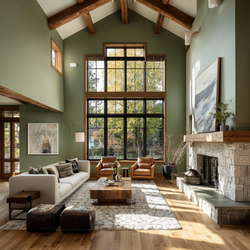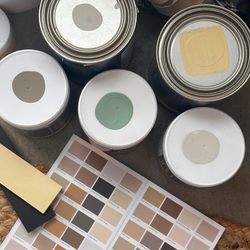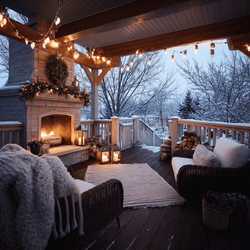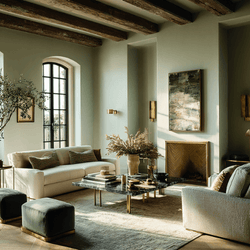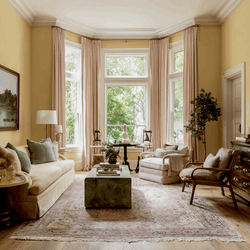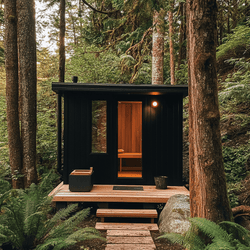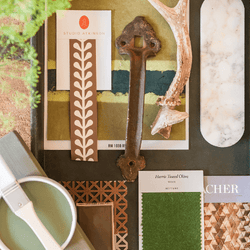Full Spectrum Paint Color – What’s all the Fuss About?

For the past decade or so the concept of full spectrum paint color has emerged as one of the most intriguing developments in paint color technology. This emergence has been met with rave reviews and accolades by some, while others have not been able to grasp what all the fuss is about.
From a purely objective perspective what is implied by full spectrum color is that each color regardless of its apparent hue is comprised of a multiple of different colorants (color pigments), incorporating a little something from all of the different places on the traditional color wheel. Black colorant is always eliminated from this approach due to its inherent non-reflectivity. So reds will also have blues and yellows added, and the deepest of hues that may look black, will actually be a concoction of colorants with everything except black! It is important to understand why this approach is different from the industry standard that we have lived with since post World War II.

Traditionally paint companies have manufactured colors with as few colorants as possible. Some of the reasons for doing this made sense at the time. Back in the day when all paint was manually tinted by a store clerk, this approach made the process simpler and resulted in less mis-tinted paint. Having to dispense two or three colorants to achieve a color is by definition easier than tinting one that requires in some cases up to eight or more colorants.
Another good reason for this approach was that all of the color chips that were produced to represent the colors of any given palette were made from lacquerer or ink, not paint (who knew?). A simpler formula was a better way to achieve an acceptable match between the actual paint being purchased and the chip that was used as a reference. As we all know this doesn’t always work out in the end either. Furthermore the lacquerers used are tinted with different colorants than those used to tint the paint you purchase. You can see how this can present a problem.
The good news is that modern technologies have allowed us to overcome these limitations. Almost all paint stores employ computerized dispensing equipment that allows for the accurate and repeatable dispensing of complex formulas with any combination of colorants we choose. This virtually eliminates the chances of the formula being dispensed incorrectly.
With regard to the paint chips, few manufacturers are willing to make paint chips from real paint. C2 Paint is one exception to this rule. All of the C2 color tools, (Ultimate Paint Chips, fan decks, or Take Home Chips) are made from real eggshell paint and the actual colorants that are used in tinting the paint that you ultimately put on your walls. C2 color tools have the ability to represent complex full spectrum colors accurately because they are made from real paint using the same colorants and combinations that are used in the paint you buy.

Another compelling reason for paint manufacturers to not embrace the full spectrum approach is cost. It is much cheaper to use black and a few other less expensive colorants than it is to create full spectrum colors that employ more expensive colorants in greater quantities. C2 Paint has always taken the approach of bringing to market the most beautiful and high quality colors, regardless of cost.

So now that we can do it, why do we want to do it? Or better yet why should you purchase full spectrum paint over the more traditional and widely available options? One analogy that I like to use to illustrate the difference is that of a well cooked dish that is made with a variety of different spices in varying amounts, compared to one using basic salt and pepper. If prepared right, you may not be fully aware of exactly what you taste, but you know it tastes great. Similarly the nuances and undertones of a full spectrum color make it inherently more satisfying to the eye than its salt and pepper counterparts.
Furthermore this multiple colorant approach reflects a fuller range of natural light, allowing the paint colors to easily blend with the other design elements in a given room. Fabrics, carpets, and accessories are more harmonious when pulled together by a paint color that has elements of all of their colors present. Run of the mill paint colors are much harder to match with other specific elements due to the narrower range of light that they reflect. In simple terms full spectrum colors play well with others.

Fine artists have employed this technique for centuries. Using complementary colors to de-chromatize the primary colors of red, blue, and yellow, instead of black, has allowed artists to more accurately capture the nuances of natural light in their paintings. Rembrandt was known to instruct his apprentices to use a full spectrum gray ground on all their canvases before they began painting. With full spectrum paint colors you are able to apply this same fine art technique to your walls.
The C2 palette of 496 full spectrum colors provides the advantage of being a pre-edited collection that offers only the most beautiful colors that have been time tested and proven to work well in the real world.
In summary full spectrum paint colors are superior to their more commercially available alternatives because they reflect a broader range of natural light and are easier to coordinate with the other three dimensional elements in the room. More beauty with less stress sounds like a winning combination to me.



